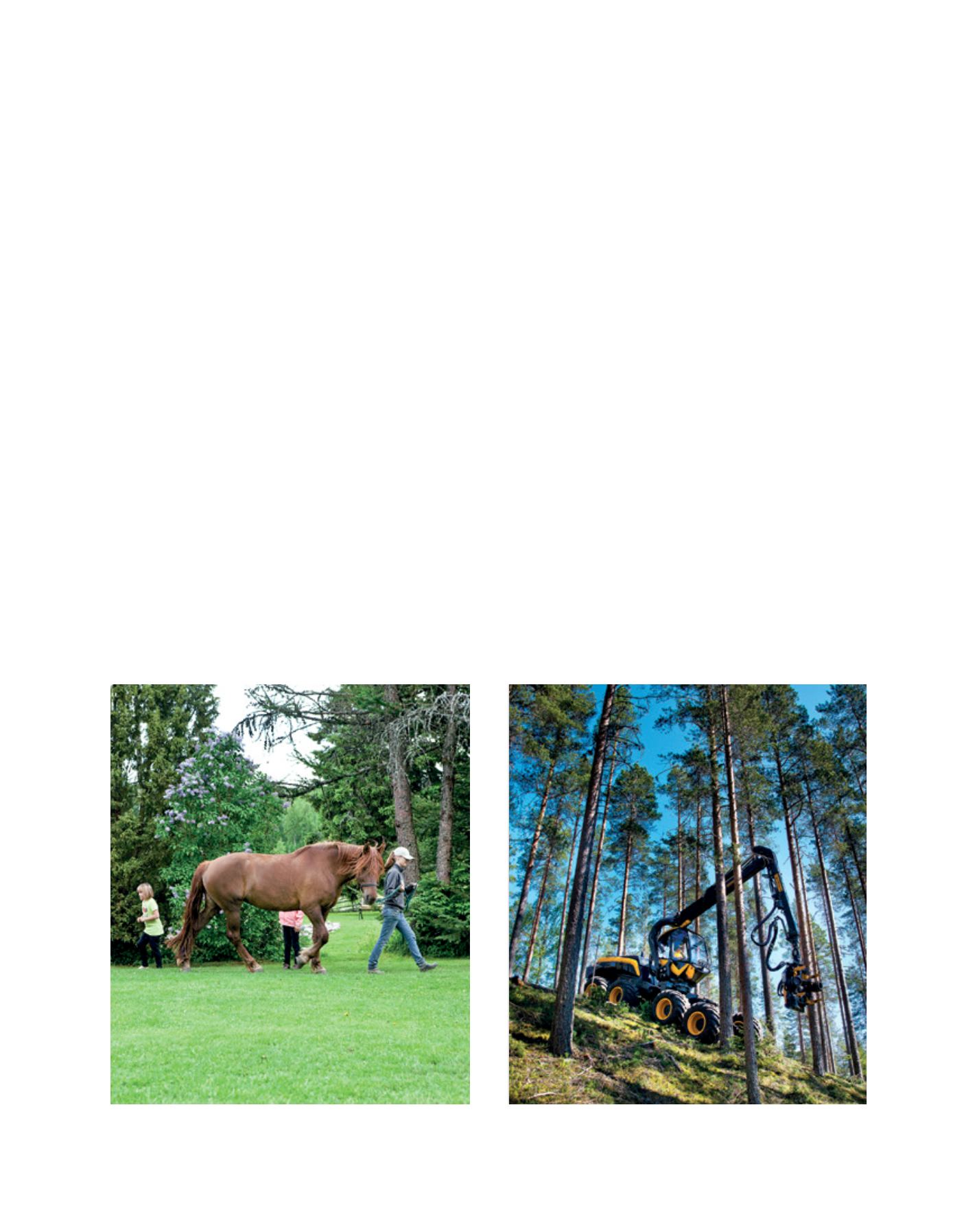

[
] 211
covered with forests. Only 8 per cent of the land is farmland,
and it is difficult to create larger uniform arable areas within
this. Not only do the vast water areas and forests patch the
land into smaller entities, but also the soil type determines
various aspects of the production structure, such as the size
and shape of the land parcels and their distance from farm
headquarters. The scattered location of parcels causes extra
costs and makes it difficult to increase the farm size. That is
often an obstacle for farms to increase their profitability. It
has caused family farmers to seek livelihoods in other busi-
ness activities. Most Finnish farms are already in forestry
as well as farming, and diversified farming is getting more
popular. Over 30 per cent of farms practice other gainful
activities in addition to agriculture.
Small and plenty
Finnish agriculture is based on family farms, characterized
by a large number of relatively small farms. The number of
farms was at its highest level during the 1960s. Since then the
number has fallen rapidly, mostly due to urbanization. Since
Finland joined the European Union (EU) in 1995 the number
of small farms has decreased significantly. The amount of land
used for agriculture has been at a stable level for a long time.
In 2013 it covered 2,283,300 hectares.
In 2012 there were 58,607 farms in Finland. During the
years 1995-2012 the amount of farms decreased by over 38 per
cent. Meanwhile farms that have received support payments
have increased in size by almost 70 per cent: from 22.8
hectares of farmland to 38.6 hectares. In 2013, only 2.5 per
cent of Finland’s farms were big farms, with over 150 hectares
of farmland. However, the size of farms keeps growing. Nine
per cent of all farmland is organic agriculture, and organic
farms tend to be slightly bigger than other farms.
Agriculture provides full-time employment for 78,000 Finns,
which is 3.1 per cent of the workforce. The amount of family
members participating in farmwork is significant: in 2010 it was
48,706 people. Labour that has been employed outside the family
accounts for only 2,963 people in the entire country. Due to the
trend of growing farms, the use of employees is also growing.
Over 30 per cent of farms practice other gainful activities
besides agriculture. These are often small businesses, part-
time or seasonal activities. The work is done mostly by the
families, but it also has employment effects. Many of the busi-
nesses that have expanded their activities outside farming
are active in the service field, food-related businesses or in
machinery engineering. The rising popularity of local food has
enhanced the success of small food companies. Many Finns
are willing to pay for clean, locally produced food because
they know the producer and the production conditions. The
trend of local food is beneficial for family farms, and consum-
ers value ethical food that is family produced.
Traditionally farms have also had forests, which have been
an important addition for the economic stability and welfare
of the families. Forest income is commonly used to finance
farm investments. Family-owned farms, as well as other
private forest owners, also make an important contribution to
the Finnish economy through forest management. The forest
industry is a major contributor to well-being in Finland and
approximately 80 per cent of Finnish wood used by the forest
industry comes from privately owned forests. The value of
forest industry exports accounts for approximately 20 per cent
of all Finnish exports.
Supporting the generation shift in farms is crucial – without it, many young
farmers would not continue their parents’ work
Forests are a traditional source of income for family farmers. New innovations
in bioeconomy, such as forestry, boost the local economies
Image: MMM/MAVI/Yrjö Tuunanen
Image: Ponsse Oyj
D
eep
R
oots
















